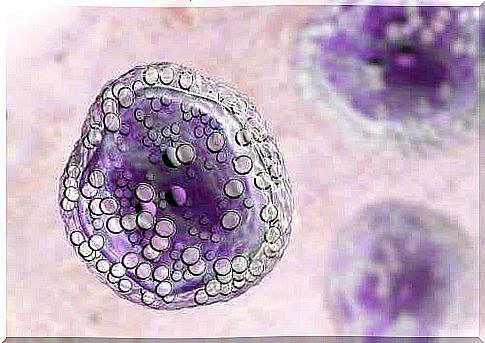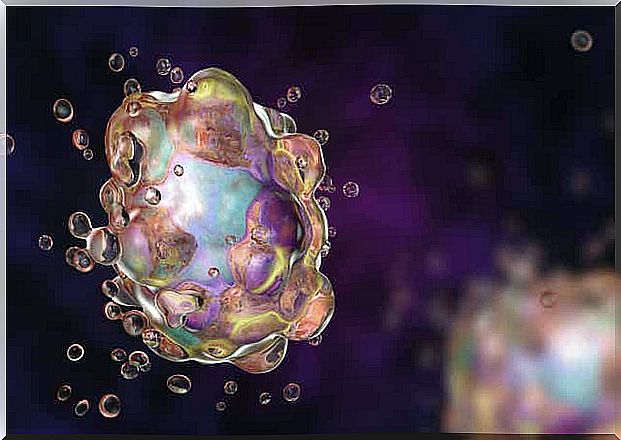Differences Between Apoptosis And Necrosis

Cell death in human tissues and other multicellular organisms is a common occurrence. The terms apoptosis and necrosis refer to two ways in which cells die. The number of cells in different tissues is determined through the homeostatic balance of new cell birth and dead cells.
Apoptosis is a natural process that is genetically programmed and responds to homeostatic mechanisms. However, activation of apoptosis can fail, which can lead to problems in the body.
Necrosis, on the other hand, is an acute process that originates from major cell damage or disease.
Cellular mechanisms of apoptosis and necrosis

When a cell dies, its vital functions cease. This is the result of irreversible morphological, functional, and chemical changes.
Cells can die for many different reasons. Such causes may include, for example, disability, mechanical damage, infections, chemical agents, or nutrient deficiencies.
The difference between apoptosis and necrosis manifests itself in the mechanism by which a cell dies. Next, we describe in more detail the characteristics of apoptosis and necrosis.
Necrosis
Necrosis occurs acutely in a non-physiological manner due to injury-induced damage to a significant portion of the tissue. This can happen in the following situations:
- In the center of tissue necrosis.
- In the area of ischemia (without adequate blood).
- In the area of toxin-induced damage.
The action of toxins, oxygen deprivation, severe damage, or some other damaging situation can cause a decrease in ATP, or adenosine triphosphate, which initiates the necrosis process. ATP is a substance that provides energy to cells and without it cells cannot perform their functions.
This lack of energy causes the cellular organs, i.e. the various structures that perform the vital functions of the cell, to become disordered. Similarly, the cytoplasm, or cell mucus, which is in the center of the cell and where the cell organ is located, breaks down. Necrosis produces the following changes in cellular organs:
- Endoplasmic reticulum (responsible for the synthesis of molecules as well as the transport of substances) and mitochondrial enlargement.
- Decomposition of chromatin (the site where the cell’s DNA is).
- The cell membrane loses its continuity and eventually ruptures.
During necrosis, DNA breaks down into random, vague particles. As a result of the loss of cell membrane continuity, the contents of the cell can be discharged out of the cell.
This process causes the cells of the immune system to move to the area where necrosis has occurred, triggering the inflammatory process.
Apoptosis

The process of apoptosis was discovered in 1972 and was the subject of histological examinations until the late 1980s. It was not until the 1990s that researchers succeeded in elucidating the genetic and molecular mechanisms involved in the process.
Cell death can occur naturally or as a result of disease, but without loss of ATP. This is because apoptosis requires energy for its process.
Genetically and synthetically motivated regulation elicits biochemical reactions that lead to changes in cell morphology and ultimately cell death. All of this is a reaction to physiological or pathological events.
When apoptosis is the result of disease, the disease motivates the cell to cause its own death. It involves condensation and shrinkage of the cell organ in the mucosa.
Chromatin cannot be released but condenses into apoptotic bodies. The condensed chromatin is not weakened by the immune system, so inflammation cannot occur. Instead, neighboring cells take control of the inflammation. This process occurs in individual cells and not in the entire tissue area.
Final summary
In summary, the difference between apoptosis and necrosis lies in the stimulus that triggers the cell death process. There are also differences in energy requirements, histology and DNA breakdown.
In both processes, cellular organs and cell membranes experience changes. Apoptosis is transient and develops in individual cells and necrosis instead occurs in an entire portion of the tissue.









